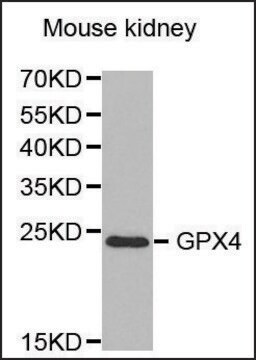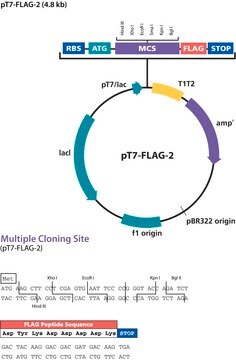OGS568
PSF-CMV-MUKAPPA - MOUSE KAPPA LIGHT CHAIN ANTIBODY PLASMID
plasmid vector for molecular cloning
Synonim(y):
cloning vector, expression vector, molecular cloning vector, plasmid, plasmid vector, snapfast vector, vector
About This Item
Polecane produkty
Postać
buffered aqueous solution
masa cząsteczkowa
size 4576 bp
selekcja bakterii
kanamycin
Pochodzenie replikacji
pUC (500 copies)
Rozszczepienie peptydów
no cleavage
Promotor
Promoter name: CMV
Promoter activity: constitutive
Promoter type: mammalian
gen reporterowy
none
Warunki transportu
ambient
temp. przechowywania
−20°C
Opis ogólny
Promoter Expression Level: This plasmid contains the mammalian CMV promoter to drive gene expression. We have tested all of our mammalian promoters in a range of cell types and CMV is consistently the strongest in those we have studied. However there are many reports of the CMV promoter demonstrating silencing by methylation in long-term culture.
Zastosowanie
To enable this immediately upstream of the constant region coding sequence there is a BseRI restriction site. This is a type-IIS restriction enzyme that binds in one position (CAGCAG) and then cleaves a specific number of nucleotides away from the binding site regardless of the sequence at the cleavage point. We use this site in all of our antibody expression cassettes in the same position. In this plasmid cutting with BseRI will result in an overhang consisting of the first two nucleotides of the first codon of the constant region. This means that any variable region with the same overhang at its 3 prime end can be ligated into this plasmid when used in conjunction with any 5 prime site (NotI-NcoI). To add this overhang the variable region must be PCR amplified to contain any of the following sites at its 3 prime end: BseRI BsgI BtsI or BsrDI. By using this system it allows antibody variable regions to PCR amplified and fused to any of our constant region plasmids without having to re-synthesise the entire antibody expression cassette each time.
Sekwencja
Komentarz do analizy
produkt powiązany
Kod klasy składowania
12 - Non Combustible Liquids
Temperatura zapłonu (°F)
Not applicable
Temperatura zapłonu (°C)
Not applicable
Certyfikaty analizy (CoA)
Poszukaj Certyfikaty analizy (CoA), wpisując numer partii/serii produktów. Numery serii i partii można znaleźć na etykiecie produktu po słowach „seria” lub „partia”.
Masz już ten produkt?
Dokumenty związane z niedawno zakupionymi produktami zostały zamieszczone w Bibliotece dokumentów.
Nasz zespół naukowców ma doświadczenie we wszystkich obszarach badań, w tym w naukach przyrodniczych, materiałoznawstwie, syntezie chemicznej, chromatografii, analityce i wielu innych dziedzinach.
Skontaktuj się z zespołem ds. pomocy technicznej








